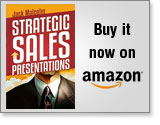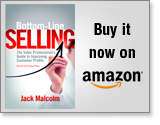It has been quite a while since I’ve written a book recommendation. I simply haven’t come across much recently that was worth passing on to my readers.
Until now.
In Making Numbers Count, Chip Heath and Karla Starr have produced a comprehensive set of best practices for presenting numbers for maximum effect.
We all know that it is important in business communication to be data-driven, hence the need for numbers to make our case. Yet data is not enough. It’s easy to think that numbers speak for themselves, but unfortunately that’s not the case. Why not?
Persuasive communication is about getting people to act in a certain way. In order to do so, they must first attend to your message, understand it, believe it, remember it, and then act on it. By itself, data supports only action number three. Simply providing numbers without using some of the techniques in this book will guarantee that you leave a lot of persuasive oomph on the table. With these techniques, you’ll be able to grab attention, get your intended meaning across, make it stick in their memories, and evoke emotions which drive action.
Let’s start with understanding. On the face of it, nothing should be easier to understand than a number. We know that 6 is more than 5, and 60 much greater than 6. It’s obvious 43% is bigger than 17%. We know 1/3 is larger than 1/4. (Actually, that last is not so obvious. When A&W introduced a 1/3 pound burger at the same price as McDonald’s quarter-pounder, sales declined because more than one-half of their customers thought it was smaller. Just another illustration why numbers sometimes need a little help.)
On the other hand, nothing is more meaningless than a single number. Is 5 a big number? If you drink 5 ounces of water after a hard workout, it’s not near enough. If you down five ounces of liquor before driving home, it could change your life. Numbers are meaningless except when compared with something we already know.
Exceptionally large or small numbers can be especially difficult to understand. We all know a billion is more than a million, but it really hits home when you say a million seconds is about 12 days; a billion seconds is 32 years.
If you want to manage the meaning, you must choose the comparison. When you present a number without context, your listeners or readers will interpret the number relative to their own experience, which might not prompt your intended effect. If you want your numbers to count—to serve your purpose—you need to choose the proper context. Here’s an example from the book:
59% of Americans polled said that growing trade ties between countries are “very good” or “somewhat good”. When I read that statistic, I thought that since the US has traditionally promoted free trade, it’s not too surprising that 3 out of 5 support growing ties. But, what if I had told you first that of 47 countries surveyed, the US came in dead last by far?[1] (This example also illustrates how you can grab attention with a number by setting up and then breaking an expectation.)
Understanding is a good start, but often you also need to make numbers memorable and vivid. Abstract numbers tend not to stick in minds very well, so one of the best ways to make them memorable is to make them concrete, often by relating them to something familiar, such as comparing tumor sizes in centimeters to familiar objects (1 cm = pea; 3cm = grape). There are many such techniques in the book.
If you’re going for emotional impact, you will have to make your numbers vivid, especially because even dramatic numbers may fail to make an impression because of psychological numbing. To punch through indifference, we need to think about something that evokes the requisite emotion. Imagine the horror we all feel when learning about a plane crash. What if I told you that the current daily COVID death toll is equivalent to a fully loaded 737 crashing every three hours of every single day?
This post has only given a hint of the myriad techniques you can learn in the book. I don’t want to steal their thunder, and besides, I’ll probably use a few of them in future posts! The best part of Making Numbers Count is that it’s full of before-and-after examples—77 in all. You could become a more eloquent communicator simply by becoming familiar with the examples, or better yet, follow their advice and try to improve on their efforts.
[1] That survey was taken in 2007; I don’t know comparable stats for today, but that simply underscores the need to provide proper context.
In human relationships, there’s the common idea that intention trumps technique. As long as you have sincere good intentions, you’ve got a head start on likeability and persuasiveness because your counterpart will sense it and will appreciate your efforts.
I definitely agree that good intentions are a critical necessity, but they are not enough. In fact, your good intentions can actually work against you if you’re not careful. Here are four of the top ways your good intentions can bite back, with suggestions to safeguard against them.
Reactance: There’s an old joke that the best way to get something done is to forbid a teenager to do it. The only problem with that joke is that it gives teenagers a bad name. As we’ve seen with the mask wearing debate going on right now in our country, even adults—maybe especially adults—will take action against their own interests if they feel someone is unfairly taking away their freedom to choose their own actions.
Solution: Give people options.
Pushing too far too fast: According to social judgment theory, people can hold a variety of attitudes toward an idea, ranging from complete acceptance to complete rejection. There is usually a little wiggle room called the “latitude of acceptance” that each person is comfortable with. In most cases, people can be moved slightly from their current positions. It’s reasonable and possible to move someone from opposition to skepticism or even possibly neutrality. But outside that latitude is the “zone of rejection”, and if you try to move them too far too fast, they not only won’t move, but they will move in the opposite direction. Your best efforts will only drive them further away.
Solution: Know your audience and use strategic patience.
Putting people down: You may feel tempted to give others the benefit of your wisdom and experience by providing excellent advice. But that’s just the problem. They may react as if they are in a one-down position. We all want to preserve our status, and we may be overly sensitive to threats to our status. Ironically, trying to help someone by giving them well-intentioned advice can actually make them feel in a “one-down” position (as described by psychologist Edgar Schein).
You may also try too hard to portray confidence in your own position and come across to the other person as cocky or arrogant, in which case they will put you in your place by doing the opposite of what you ask.
Solution: Use questions to make it the other person’s idea.
Misreading motivation: Motivation comes in two forms, extrinsic and intrinsic. Rationally, you might expect that appealing to both at the same time would be the most persuasive approach, but in fact it can backfire. Offer someone an extrinsic incentive to do the right thing, and they may easily get insulted. In Made to Stick, Chip and Dan Heath tell the story of a seller of safety videos that tested two approaches. One approach simply asked firefighters if they would be interested in the videos for their educational programs, and they received unanimous positive responses. The second approach offered a choice between a set of steak knives and a popcorn popper as an inducement to trial the video, and they discontinued the trial after the first two attempts were met with cursing refusals.
Solution: Lead with intrinsic appeal; you can always throw in extrinsic if necessary.
As a persuader, you should follow a version of the Hippocratic Oath: “First, do no harm.” Feel free to do what you want, but I think you’re smart enough to know that you need to supplement your good intentions with careful preparation, outside-in thinking, and respect.
Credibility expert Mitchell Levy, who interviewed me recently for his videocast, has a stock question that he asks all the guests on his show: “What’s your CPoP?”
CPoP stands for “Customer Point of Pain”. Mitchell asks that question because he’s less interested in what a person does, than in what a person does for others. A question like that is a scalpel that cuts through layers of marketing and sales-talk fat to get to the real meat inside—especially because Mitchell insists that any answer must comprise ten words or less.
I confess that I knew the question was coming before the interview started, but that doesn’t mean that I found it easy to answer—not without a lot of thought. I’ve been in this business for a long time, and I’ve had thousands of opportunities to describe what I do, but still I had to think carefully to distill it down to its essence.
In the end, I’m rather proud that I was able to boil down my customers’ point of pain to just two words:
Being heard.
Being heard: what does that mean? It means that every person that I work with wants to matter in this world somehow. They want to matter by making a real contribution—and be recognized as making a real contribution—to the people whose work and life they affect, whether they be customers, coworkers, their leadership, or even friends and family.
The scope and value of their contribution begins with the quality of their thinking, but it doesn’t end there. It doesn’t matter how smart you are if others don’t listen to you with the attention and credibility you deserve. I work with a lot of very smart people who don’t show their full brilliance to others because what comes out of their mouths does not always do justice to what goes on in their minds. Perhaps they take too long to get to the point, or they lack confidence (especially in larger groups), or they don’t put their ideas in terms that their listeners understand or care about, so they are not heard to the extent they deserve.
What does it take to be heard? Contribution and credibility. Both are necessary, but ultimately the second rests on the first. As long as you have something to say that contributes value to the other party, you are almost guaranteed an attentive listener. You won’t often go wrong if you go into every conversation or presentation with a clear idea of how the other person will be better off for having listened to you.
Contribution is a necessary first step to getting that initial hearing, but you need credibility to sustain attention long enough for your message to take root and turn into decisive action. How many shiny new mousetraps have gone unsold because the inventor did not put as much thought and care into selling them as they did in creating them? As Aristotle says, “…It is not sufficient to know what to say, it is also necessary to know how to say it.”[1]
There’s bad news and good news: The bad news is that it’s harder to be heard in a world that’s flooded with a nonstop flow of information. The hard fact is that your natural brilliance won’t sell itself. You need to communicate in such a way that others believe you, and that takes skill and practice. The good news is that quality can stand out because people will gravitate to those who provide the most value in return for their attention, and who communicate that value clearly and compellingly.
If your point of pain is “being heard”, ask yourself these two questions:
What am I doing to maximize my contribution when I speak?
What am I doing to maximize my credibility?
[1] Thomas Habinek, Ancient Rhetoric from Aristotle to Philostratus, p. 50.
When I work with coaching clients to help them become more effective communicators, they often ask me how to sell an idea internally, perhaps to their boss or to another group within the company whose cooperation they need. My first question is always, “What’s in it for them to agree?”
Almost invariably—after a long pause—the answer comes back, “I haven’t thought about it that way.” That’s because people are so focused on their own reasons for doing things that they neglect the reasons that matter to the people who control whether those things get done.
For a before-and-after example of outside-in thinking, I’m reminded of a presentation one of my students put together for the workshop I was running on internal presentations. He was organizing a presentation to convince the CFO to approve a budget variance in order to purchase new workstations for his veteran engineers. Economic conditions had put the company in a spending freeze, and a request of this sort required special approval.
For his first effort, he justified the need by explaining that newer engineers received new workstations when they came on board, while those with longer tenure were stuck with older models. He said it was causing friction and morale problems, and he wanted to be fair to his more senior staff. I asked him what was the likelihood that the CFO would actually are whether the engineers were happy. He admitted that the probable response would be that everyone has to make sacrifices during this tough period.
I then asked him, what would the CFO care about? After a little brainstorming, he came up with reasoning that the newer workstations would improve productivity of the entire team through their superior performance, which would reduce the risk of delays in launching a new product. The resulting presentation was much more focused on the needs of the person making the decision, and I heard later that the request was approved.
What’s in it for them to agree? It’s such an obvious question that sometimes I’m abashed that I actually get paid to ask it—but it works.






